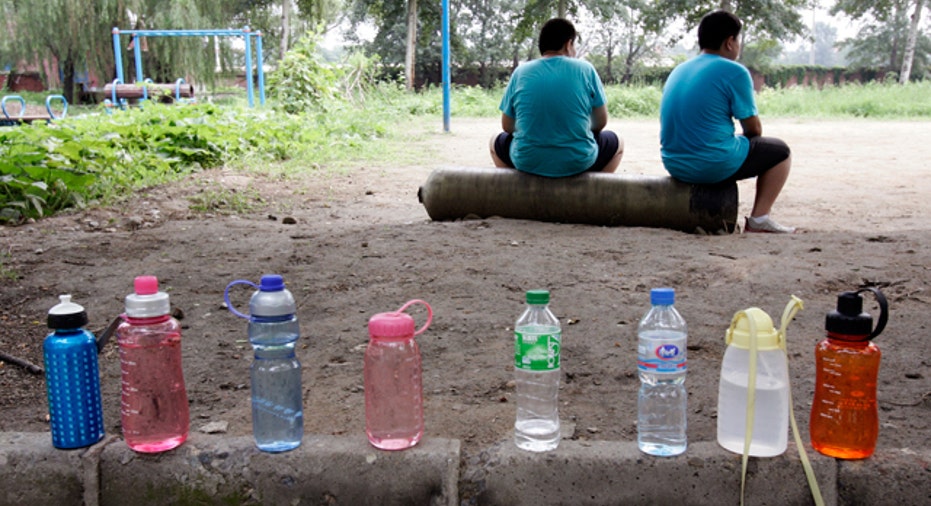Economy Changes Kids' Summer Break Plans

Maureen Fitzpatrick-Armon will be seeing a lot more of her kids this summer than in the past. For years, the mother of two sent her kids to camp, but since her husband was laid off in 2008, the family was forced to cut back on everything, and summer camp was no exception.
“What’s had to change for us is the length of their stay,” says the New York City mom. “When we had the money, we would send them for three or four weeks, and we just don’t have that anymore.”
It’s no secret the economic slowdown has changed consumers spending habits, and sleep-away camp is a luxury many of them can no longer afford.
This summer, Fitzpatrick-Armon’s girls, ages 12 and 14, will be attending camp for two weeks for a total of $1,600. According to the American Camp Association, the average weekly fee for sleep-over camps nationwide ranges from $325 to $780 per week.
“I’ve been a saver, so we have the money to send them for two weeks, but needless to say, we aren’t going to Europe for the summer,” Fitzpatrick-Armon says. “We know they have to get out of the house and learn to live on their own, so not sending them at all was not an option for us.”
Peter Swain, director of Rhode Island’s YMCA Camp Fuller and president of the Rhode Island Association of Camps, says that since the recession started in 2008, parents have been enrolling children for shorter stays.
“Parents can’t afford to send their child for six weeks, so we see them sending them for one week. It’s amazing how popular one-week sessions have become, but as a camp director, it’s really frustrating. We have all the enrollment paperwork to get through; the child’s stay doesn’t really speak to the full resident camp experience.” Camp Fuller costs $1,165 per two-week stay.
Swain has also observed parents making the decision to enroll their children much later than in previous years. “Enrollment used to be winter, now it’s late spring. Parents are waiting to make sure they have enough money.”
Howard Batterman, owner and director of Sesame Rockwood Camps and Diamond Ridge Camps in Pennsylvania, has also noticed a trend in parents registering their children later. For a four-week session, Batterman's camps cost around $3,500.
“Normally I would be completing enrollments in February and now it’s running into May,” says Batterman.“Parents want to be sure about price point and value of the program. No one is insensitive to the price point, and parents are just being more cautious with their decision.”
The average age of campers is also on the rise, according to Swain, as more parents opt to send one child, rather than all of their children, to camp.
“Four or five years ago, you would have seen parents sending both of their children, and now it’s almost like a treat that the older child gets to go,” he says. “The older child is usually better equipped to handle separation from parents, and the parents may be thinking that there will be a chance for the younger child to attend once the older child has outgrown the experience.”
According to the American Camp Association, 90% of its accredited camps offer financial assistance to struggling families. And since 2008, more parents are now requesting that assistance in order to afford their child’s tuition, says Swain.
“When the economy turned for the worst, families who had been paying in full came to us and asked for assistance,” says Swain. “They provide us with paystubs and income tax returns and we evaluate their situation. In only two cases I had to turn away families who I thought could afford it, otherwise we give them at least some portion of what they’re asking for.”
Swain says that even though they’ve been helping out families in need, the camp hasn’t lost money because they’ve been able to increase enrollment as a result of its generosity. YMCA camps like Swain’s also receive federal funding since they are part of the organization’s national offerings.
Swain says that since the recession, it’s common to see families ditching more expensive camps that can cost as much as $7,000 a week for less- costly alternatives like a YMCA camp.
“Of course, if you’re a marginal high-end private camp, you’re struggling because parents have either made the switch to a much cheaper camp, or kept their kids enrolled at the super high-end camps.”
For the most part, camps that are well organized are still near or at capacity and doing well financially, says Batterman. Camp enrollment will always have its ups and downs, but once parents feel more secure with their finances, he says most camps will start to notice an uptick.
In Carmel Valley, Calif., Michael Jacobus, director of Douglas Ranch Camps, says that enrollment is slowly starting to increase after a 15% drop over the last few years.
“There were times when we had waiting lists, and only in the last few years with the economy tanking are people not approaching us,” says Jacobus. “They are assuming they can’t afford it, but they have to call and ask. We are giving scholarships, as many as we can.”
Jacobus says that he and the staff at Douglas Ranch have been working with parents to defray costs, which range from $1,000 to $1,500 per week, and it seems to be working. The camp expects to have around 170 campers enrolled this summer, compared to 140 last year.
In years to come, parents will continue shopping around for the best value for camp, but they always need to be careful, says Batterman.
“Camp is more than a commodity. It’s not a car you’re shopping for, it’s an experience,” says Batterman. “Of course all camps are stepping up their game during the recession. They’re working even harder to provide great experiences to the child that they can’t get at home.”



















